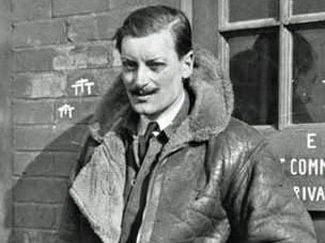One of the last surviving pilots of ‘The Few’ who fought during Battle of Britain dies aged 101
Flight Lieutenant Maurice Mounsdon was one of 3,000 airmen who fought off the Luftwaffe in the skies over southern England in 1940

Your support helps us to tell the story
From reproductive rights to climate change to Big Tech, The Independent is on the ground when the story is developing. Whether it's investigating the financials of Elon Musk's pro-Trump PAC or producing our latest documentary, 'The A Word', which shines a light on the American women fighting for reproductive rights, we know how important it is to parse out the facts from the messaging.
At such a critical moment in US history, we need reporters on the ground. Your donation allows us to keep sending journalists to speak to both sides of the story.
The Independent is trusted by Americans across the entire political spectrum. And unlike many other quality news outlets, we choose not to lock Americans out of our reporting and analysis with paywalls. We believe quality journalism should be available to everyone, paid for by those who can afford it.
Your support makes all the difference.One of the last surviving pilots who defended the country in the Battle of Britain has died.
Flight Lieutenant Maurice Mounsdon, who fought during the Second World War, died on Friday aged 101, family members confirmed.
Mr Mounsdon’s death leaves only three remaining members of “The Few” – the name given to the 3,000 airmen who fought off the Luftwaffe in the skies above southern England over three and a half months in 1940.
The surviving trio are Flight Lieutenant William Clark, 100, Wing Commander Paul Farnes, 101, and Flying Officer John Hemingway, 100.
Mr Mounsdon was honoured on his 100th birthday in September last year with a flyover by the Red Arrows off the coast of the Spanish island of Menorca, where he lived from the late 1970s after retiring there with his wife Mary, who died in 1993.
The Battle of Britain claimed the lives of 544 RAF pilots and aircrew.
Mr Mounsdon was describe as a “great man and will be missed by his nephews and nieces”, nephew Adrian Mounsdon told the Daily Mirror.
He was born in February 1918 in Lichfield, Staffordshire, according to the Battle of Britain Monument website.
He joined the RAF in August 1939 and was eventually posted to 56 Squadron at Digby in June.
The airman had previously shot down four enemy planes when he took off from RAF North Weald in Essex on 31 August 1940 tasked to intercept some German bombers.
He had just managed to shoot at one of them when a German cannon shell hit the fuel tank of his Hawker Hurricane.
He managed to escape by using a parachute for the first time and was later found in a field in the village of High East, Essex, by locals.
Mr Mounsdon was badly burnt and spent several months in hospital, where he underwent skin grafts. He returned to duty in 1941 until he was released from the RAF in 1946.
Join our commenting forum
Join thought-provoking conversations, follow other Independent readers and see their replies
Comments